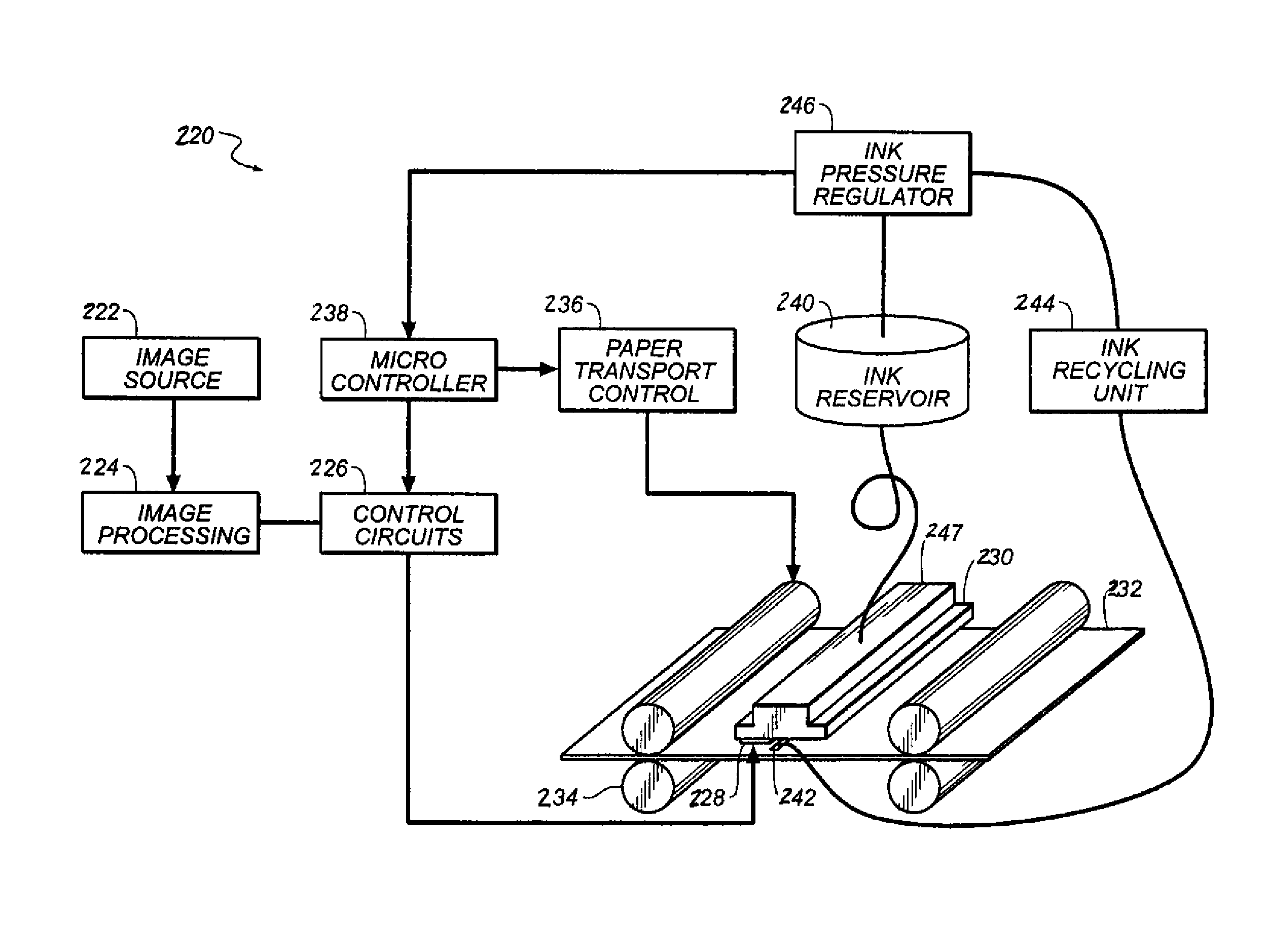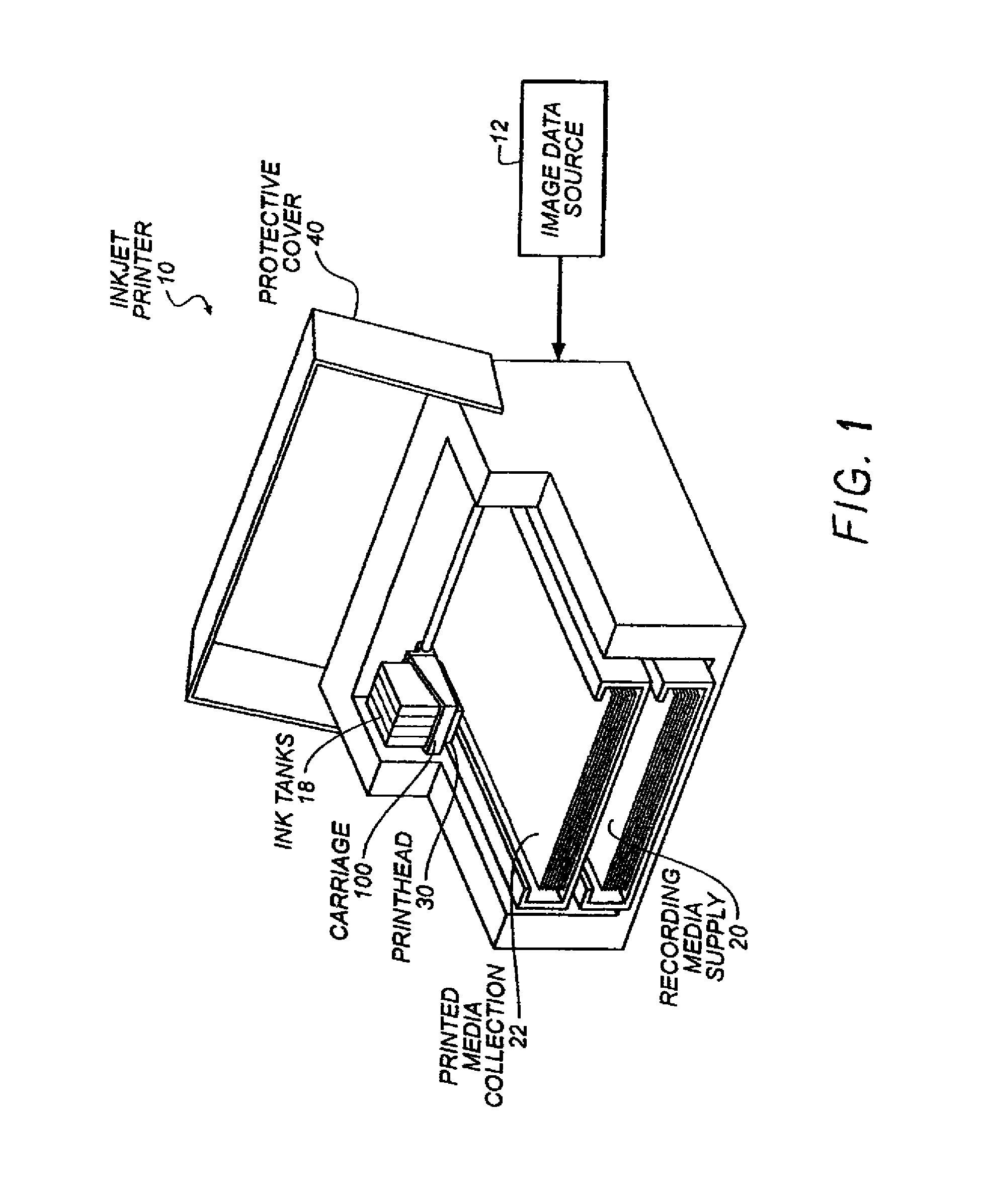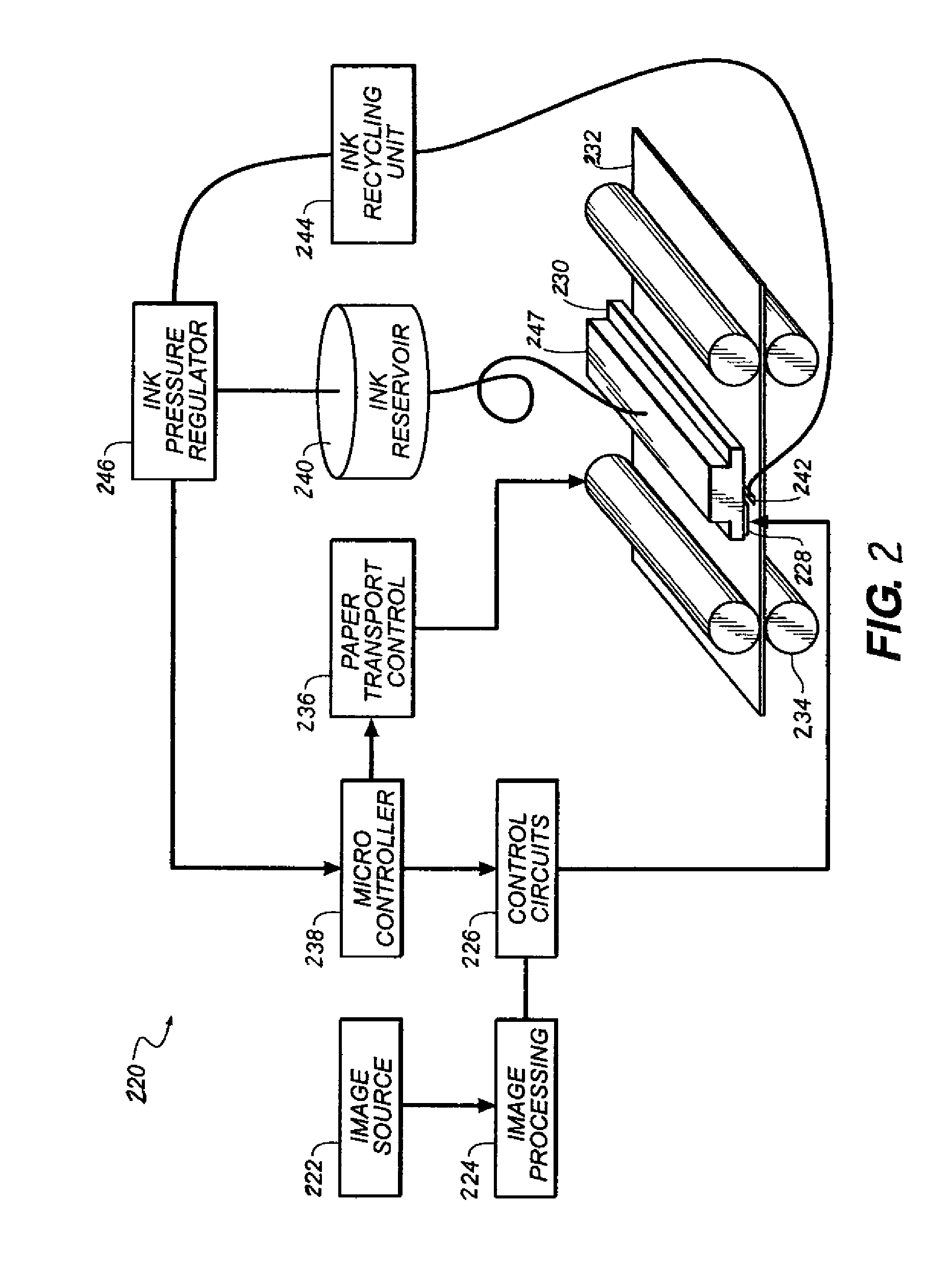Inkjet printing fluid
a technology of printing fluid and inkjet, which is applied in the field of inkjet printing fluid, can solve the problems of long milling operation, detrimental effect of optical density and gloss in printed images, pigment-based inks often require a long milling operation, etc., and achieve the effect of short time and long time intervals
- Summary
- Abstract
- Description
- Claims
- Application Information
AI Technical Summary
Benefits of technology
Problems solved by technology
Method used
Image
Examples
example 1
Synthesis of the Inventive Polyurethanes PU-1 through PU-19
PU-1:
[0085]In a round bottom flask equipped with thermometer, stirrer, water condenser, and a vacuum outlet was placed 77.16 g (0.1187 moles) of Terathane 650 polyether glycol having a average Mn=650 (Aldrich 25190-06-1, 48.56 g (0.3620 moles) of 2,2-bis(hydroxymethyl) propionic acid (DMPA), 22.69 g 90,2518 moles) of 1,4-butane diol, 350 g of ethyl acetate (EA), and 0.85 g of dibutyl tin dilaurate. The temperature was adjusted to 65° C., and when a homogeneous solution was obtained, 162.82 g (0.7523 moles) of isophorone diisocyanate (IPDI) was slowly added, followed by 10 mL EA. The temperature was raised to 78° C. and maintained overnight to complete the reaction. The reaction mixture was diluted with 65 g of isopropanol (IPA) before being neutralized with a mixture of 45.13 g of 45 wt. % KOH solution and 45 g of distilled water to achieve 100% stoichiometric ionization based on the amount of DMPA. Under high shear, 918 g o...
example 2
Synthesis of the Comparative Polyurethanes CPU-1 through CPU-9
[0088]CPU-1 through CPU-6 were prepared in a similar manner to the inventive examples. CPU-1 through CPU-4 do not contain any Y2 diol and are stable dispersions. CPU-5 and CPU-6 contained about 13% of 1,4 butane diol and the resultant dispersions were less stable as reflected by filter plugging or excessive amount of foam formed during solvent removing under vacuum. CPU-5 and CPU-6 are considered to be non-manufacturable.
[0089]CPU-7 was prepared in accordance with the recipe disclosed in U.S. Pat. No. 6,508,548. CPU-8 was prepared in accordance with the recipe disclosed in U.S. Pat. No. 6,533,408 (PU-2). CPU-9 was prepared in accordance with the recipe disclosed in U.S. Pat. No. 6,533,408 (PU-3). All three dispersions had to be diluted very significantly to lower solids for filtration. They are considered to be less manufacturable.
[0090]
TABLE 2IDY1 diolWt %Y2 diolWt %ANMw / MnCPU-1Terathane 200044.1None—80 64800 / 13900CPU-2T...
example 3
Preparation of Polymeric Dispersant P-1
[0091]A 5-liter, three-necked round bottom flask equipped with a mechanical stirrer, a reflux condenser, and a gas inlet was charged with 225 g of 1-methoxy-2-propanol and was sparged with nitrogen. Akzo-Nobel Chemicals, Inc., initiator Perkadox AMBN-GR (1.9 g) was added with stirring. A reactant reservoir was charged with 225 g of 1-methoxy-2-propanol, 23.4 g of 1-dodecanethiol, 203.5 g of benzyl methacrylate, 165.0 g of stearyl methacrylate, and 181.5 g of methacrylic acid, and the solution was degassed by nitrogen sparging. AMBN-GR (7.7 g) was added and mixed in. The reactor temperature was raised to 77° C. and the reactants were pumped from the reservoir at about 2.3 mL / min over a 360-min period. The reaction mixture was stirred for at least 12 h at about 77° C. The polymer was neutralized to completion with dimethylaminoethanol and stirred for 45 min. The reaction mixture was diluted with 2,580 g of water and filtered through a Pall Corp. ...
PUM
| Property | Measurement | Unit |
|---|---|---|
| molecular weight | aaaaa | aaaaa |
| molecular weight | aaaaa | aaaaa |
| weight average molecular weight | aaaaa | aaaaa |
Abstract
Description
Claims
Application Information
 Login to View More
Login to View More - R&D
- Intellectual Property
- Life Sciences
- Materials
- Tech Scout
- Unparalleled Data Quality
- Higher Quality Content
- 60% Fewer Hallucinations
Browse by: Latest US Patents, China's latest patents, Technical Efficacy Thesaurus, Application Domain, Technology Topic, Popular Technical Reports.
© 2025 PatSnap. All rights reserved.Legal|Privacy policy|Modern Slavery Act Transparency Statement|Sitemap|About US| Contact US: help@patsnap.com



